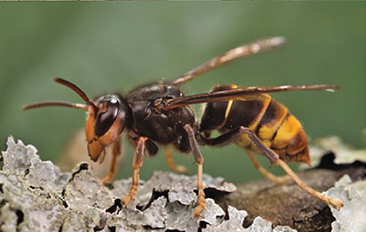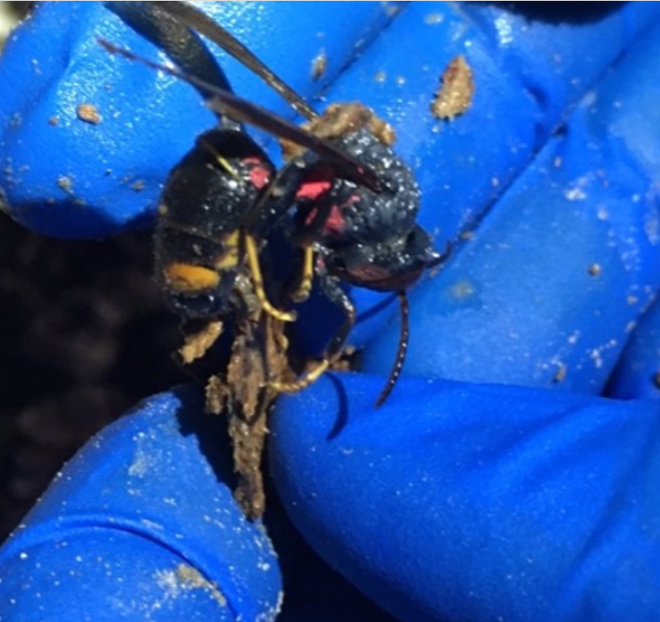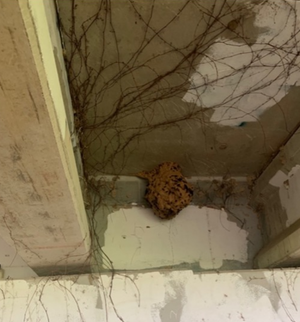'A deadly predator': 2nd yellow-legged hornet nest, murder hornet's relative, found in GA
Georgia land management officials are asking residents for help locating an invasive hornet threatening the Peach State's honey production and its No. 1 economic driver: agriculture.
Georgia Department of Agriculture Commissioner Tyler Harper said officials located a second yellow-legged hornet nest on Wilmington Island near Savannah, while pest experts continue efforts to eradicate the insect, a close relative of the "murder hornet."
The yellow-legged hornet is a non-native species and, if allowed to flourish in the U.S., could threaten native pollinators, honey production, and agriculture − Georgia's main economic driver, the department wrote in a release issued Wednesday.
According to the release, the second nest was discovered Sept. 15, by state staff under a bridge on the island and destroyed that evening by the crew who eradicated the first nest last month.

'A win for the state'
Harper called the destruction a win for the state and said officials are "working around the clock" to find additional hornets to kill them.
The first yellow-legged hornet nest was spotted last month by a Savannah beekeeper who reported the sighting to the state agency. The agency, partnered with the University of Georgia and the U.S. Department of Agriculture (USDA), said the finding marked the first detection of the non-native species in "the open United States."
Agency staff and pest management professionals destroyed the nest on Aug. 23 in a residential neighborhood on Wilmington Island.
After the second nest was eradicated, Lewis Bartlett with the University of Georgia and Jamie Ellis with the University of Florida examined it and identified developing hornets within the nest, according to the release. State officials also wrote Bartlett and Ellis found no evidence of the reproductive males or queens in the colony when it was destroyed.
In addition, the release says, UGA scientists found evidence suggesting they originated in Asia.
State officials did not say how the invasive insects made their way the U.S. soil.

Bees kill Kentucky man:Swarm of bees in potting soil attack, kill 59-year-old Kentucky man, coroner says
What is a yellow-legged hornet?
State officials said yellow-legged hornets - also called Asian hornets - prey on honeybees and if allowed to establish in the United States may threaten honey production.
Described as a "social wasp species," because they're known for constructing communal paper nests, the hornets are often found hanging from trees or in tree hollows. Also known as Vespa velutina hornets, their nests are generally egg-shaped and can house up to 6,000 worker wasps.
Their legs are mostly or partially covered in yellow, giving them their name.
How big are the wasps and where do they originate?
Yellow-legged hornets are native to tropical and subtropical areas of Southeast Asia, the GDA reports, athough the insect has also established a presence in the Middle East and Europe.
Colonies peak in size in mid to late summer and the hornet is sometimes mistaken for the Northern Giant Hornet, though it is generally smaller than that species. Workers can be as small as half the size of the NGH, whereas queens are a bit larger at 3/4 the size.

Meet Methuselah:The world's oldest known aquarium fish is at least 92, DNA shows
'A deadly predator'
UGA Professor of Entomology and Honey Bee Program Director Keith Delaplane said an ideal scenario includes eradicating all nests before colonies have time to name new queens and breed during winter months.
“While it does not pose a serious risk to humans, pets and livestock, this hornet has proven itself a deadly predator of honey bees and other pollinators," Delaplane said.
Georgians, as well as residents in nearby states including Florida, are being asked to continue report suspected sightings to their state agricultural agency.
What to do if you see a yellow-legged hornet:
If you have spotted a yellow-legged hornet the GDA has a form you can complete.
The agency advises taking photos of the hornets and comparing their appearance to pictures available on the USDA website, as they can look similar to native species that pose no threat.
The GDAs asks people to include the following information with form submissions:
- Name and contact information
- Location and date of the sighting
- If possible, a photograph of the hornet. If not, a description of the size of the insect, the color of the head and body, and what it was doing
- Location and approximate height of the nest (if found)
- The direction the hornet(s) flew when flying away
Contributing: Caitlyn Stroh-Page with the Savannah Morning News.
Natalie Neysa Alund is a senior correspondent for USA TODAY. Reach her at nalund@usatoday.com and follow her on X, the platform formerly known as Twitter @nataliealund.
Disclaimer: The copyright of this article belongs to the original author. Reposting this article is solely for the purpose of information dissemination and does not constitute any investment advice. If there is any infringement, please contact us immediately. We will make corrections or deletions as necessary. Thank you.



